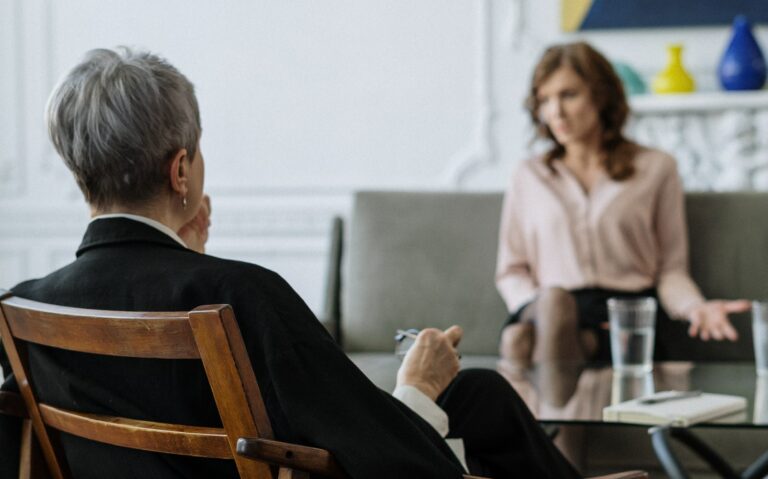Prescription Drug Rehab Center in California
Understanding Prescription Drug Rehab
Prescription drug abuse and addiction is a growing problem in California and across the United States. Prescription medications can be highly addictive, and many people who start using them for legitimate medical purposes end up developing physical and psychological dependence on them.
If you are struggling with a prescription drug addiction or other substance abuse issues, there is help available at prescription drug rehab centers in California.

By: Renaissance Recovery
Clinically Reviewed by: Diana Vo, LMFT
Last Updated:
03/24/2024
What to Expect at a Prescription Drug Rehab
At a prescription drug rehab, you can expect to receive a comprehensive treatment plan that is tailored to your unique needs.
While all substance use disorder and prescription drug abuse treatment centers will differ slightly, you can expect your time here to unfold as follows:
-
Assessment: The first step in prescription drug abuse treatment is usually an assessment by a healthcare professional to determine the severity of your addiction to a prescription drug and the appropriate course of treatment.
-
Detoxification: If you are physically dependent on prescription medication, you will need to go through a detoxification process to safely remove the drugs from your system. This process can be supervised by healthcare professionals and may involve the use of medication to manage withdrawal symptoms.
-
Individual therapy: You will work with a therapist to identify the underlying issues that led to your prescription medications addiction and develop coping strategies to avoid abusing prescription drugs again (also known as relapse).


4. Group therapy: Group therapy sessions provide an opportunity for you to share your experiences and receive support and encouragement from peers who have lived experience of prescription drug addiction treatment and recovery.
5. MAT (medication-assisted treatment): If you are addicted to opioids, you may benefit from MAT, a combined approach that utilizes medications and behavioral therapy to manage withdrawal symptoms and cravings that result from substance abuse.
6. Holistic therapies: Prescription drug rehab centers may also offer holistic therapies like yoga, meditation, and art therapy to help you manage stress and improve your overall well-being as you kickstart your sustained recovery from prescription medications and other existing substance abuse.
7. Aftercare: After completing your treatment program, you will typically receive aftercare services that may include ongoing therapy, support group attendance, and regular check-ins with a healthcare provider to monitor your progress and adjust your prescription drug addiction treatment as needed.
Your specific prescription drug addiction treatment program may vary depending on your individual needs and your chosen rehab center’s addiction treatment program and philosophy. That said, a good prescription drug rehab will offer you effective treatment in a safe and supportive environment that enables you to build a firm foundation for ongoing recovery from substance abuse.
Do I Need Prescription Drug Detox?
If you are physically dependent on prescription drugs, then you may need treatment for prescription drug detox. Physical dependence occurs when the body adapts to the presence of a drug and experiences withdrawal when the drug is no longer present in the body. Prescription drug detox is the process of safely removing the drugs from the body while managing symptoms.
Some common signs that you may need prescription drug detox include:
-
Developing a tolerance to the prescription drugs means that you need higher doses to achieve the same effect.
-
Experiencing withdrawal when you try to stop using prescription drugs.
-
Using the drug despite negative consequences, such as relationship problems or legal issues.
-
Feeling unable to control your use of the prescription drugs.
-
Experiencing cravings for the drug.
If you are experiencing any of these symptoms, consider seeking professional help. Prescription drug detox should be performed under the supervision of a healthcare professional to ensure that the process is safe and effective.

What to Bring to a Prescription Drug Abuse Rehab
If you are going to a prescription drug addiction or alcohol rehab center to engage with prescription drug addiction treatment, there are several items that you should NOT bring with you. These include:
- Alcohol
- Drugs
- Food and beverages
- Pornography in any form
- Sharp objects
- Weapons
- Clothing that is too revealing
- Gaming consoles and video games
- Sporting equipment
- TVs
- DVDs
- Playing cards
- Incense
- Candles
- Aerosol
- Beauty products or toiletries containing alcohol
- Nail products containing solvents
- Unapproved OTC medications
- Unopened medications
Policies concerning laptops and cellphones at inpatient residential treatment will vary between prescription drug abuse treatment centers. You can expect limited access to electronics unless you opt for an executive rehab program.
Vapes and cigarettes are usually permitted outpatient rehab with limits in many programs in place on the amount of smoking or vape products you can bring to rehab.
If you want to bring any personal belongings to inpatient rehab, here are some items that are usually allowed:

Fight Back Against Drug Addiction
Get evidence-based treatment to overcome drug addiction at Renaissance Recovery. Call our team now to learn more about the process.
Other Items to Bring to Rehab

Common Types of Treatment at Prescription Drugs Rehab
The treatment for prescription painkillers addiction can vary depending on the severity of the addiction and your individual needs. That said, there are some common types of treatment that are often used in prescription drug abuse rehab:
- Detoxification: Detoxification is the process of removing the prescription drugs from the body. This can be performed in an inpatient or outpatient setting and may involve the use of medication to manage withdrawal.
- Behavioral therapy: Behavioral therapies such as CBT (cognitive-behavioral therapy), can help you identify the thoughts and behaviors that contribute to your addiction and learn how to change them.
- MAT (medication-assisted treatment): MAT combines medications with behavioral therapy to help manage withdrawal and cravings. Common medications used in MAT for prescription painkiller addiction include methadone, buprenorphine, and naltrexone.
- Support groups: Support groups like Narcotics Anonymous (NA) and SMART Recovery provide a supportive environment where patients can share their experiences and receive encouragement and guidance from others in recovery. Rehab centers may connect you with local meetings of peer support groups to supplement treatment.
- Holistic therapies: Holistic therapies like yoga, meditation, and acupuncture, can help patients manage stress and anxiety disorders and improve overall well-being.
- Aftercare: Aftercare is a vital component of the recovery process and can include ongoing therapy, support group attendance, and regular check-ins with a healthcare provider to monitor progress and adjust treatment as needed.
Types of Prescription Drug Addiction We Treat
There are several prescription drugs that are commonly abused. Here are some of the main commonly abused prescription drugs that we treat here at Renaissance Recovery:
- Opioids: Opioids are a class of prescription drugs that are prescribed to relieve pain. They include drugs such as oxycodone, hydrocodone, fentanyl, and morphine. Opioids are highly addictive and can cause respiratory depression and death in high doses.
- Benzodiazepines: Benzodiazepines are a class of prescription drugs that are prescribed to treat anxiety and sleep disorders. They include drugs like Xanax, Valium, and Klonopin. Benzodiazepines can be highly addictive and can cause respiratory depression and death in high doses.
- Stimulants: Stimulants are a class of prescription medication that are prescribed to treat ADHD (attention deficit hyperactivity disorder) and narcolepsy. They include drugs like Adderall, Ritalin, and Vyvanse. Stimulants can be highly addictive and can cause cardiovascular problems in high doses.
- Barbiturates: Barbiturates are a class of prescription drugs that are prescribed to treat anxiety and sleep disorders. They include drugs such as phenobarbital and pentobarbital. Barbiturates can be extremely addictive and can cause respiratory depression and death in high doses.

Renaissance Recovery’s Orange County Prescription Drug Rehab - California
We specialize in treating all types of addictions and mental health problems at Renaissance Recovery in an outpatient rehab setting. This allows you to engage with prescription drug rehab in California while remaining anchored to your everyday life. Choose from the following programs:
-
PHPs (partial hospitalization programs)
-
IOPs (intensive outpatient programs)
-
Dual diagnosis treatment programs (for co-occurring disorders)
Take the first vital step to recovery from prescription drug abuse by calling admissions today at 866.330.9449.

